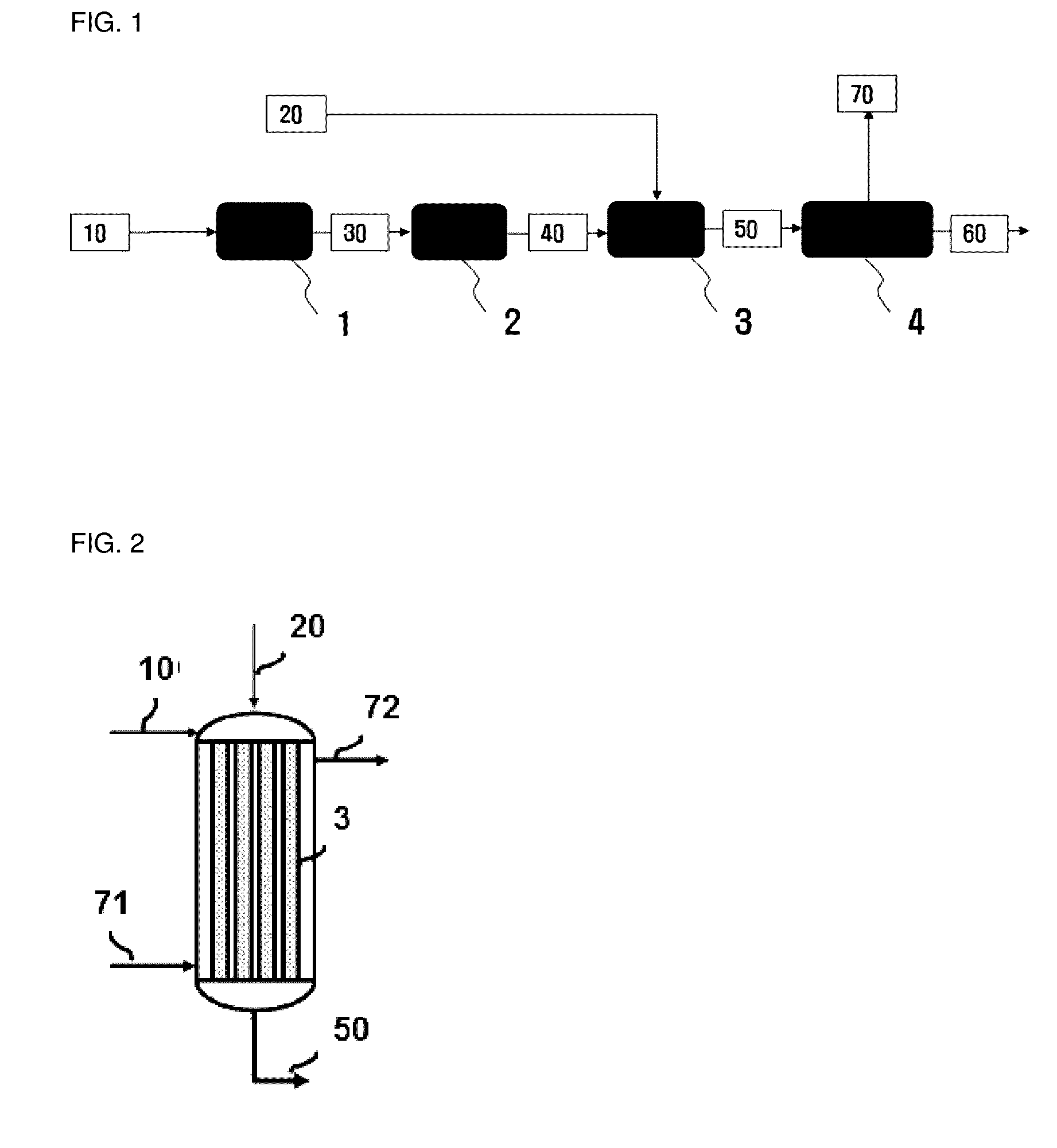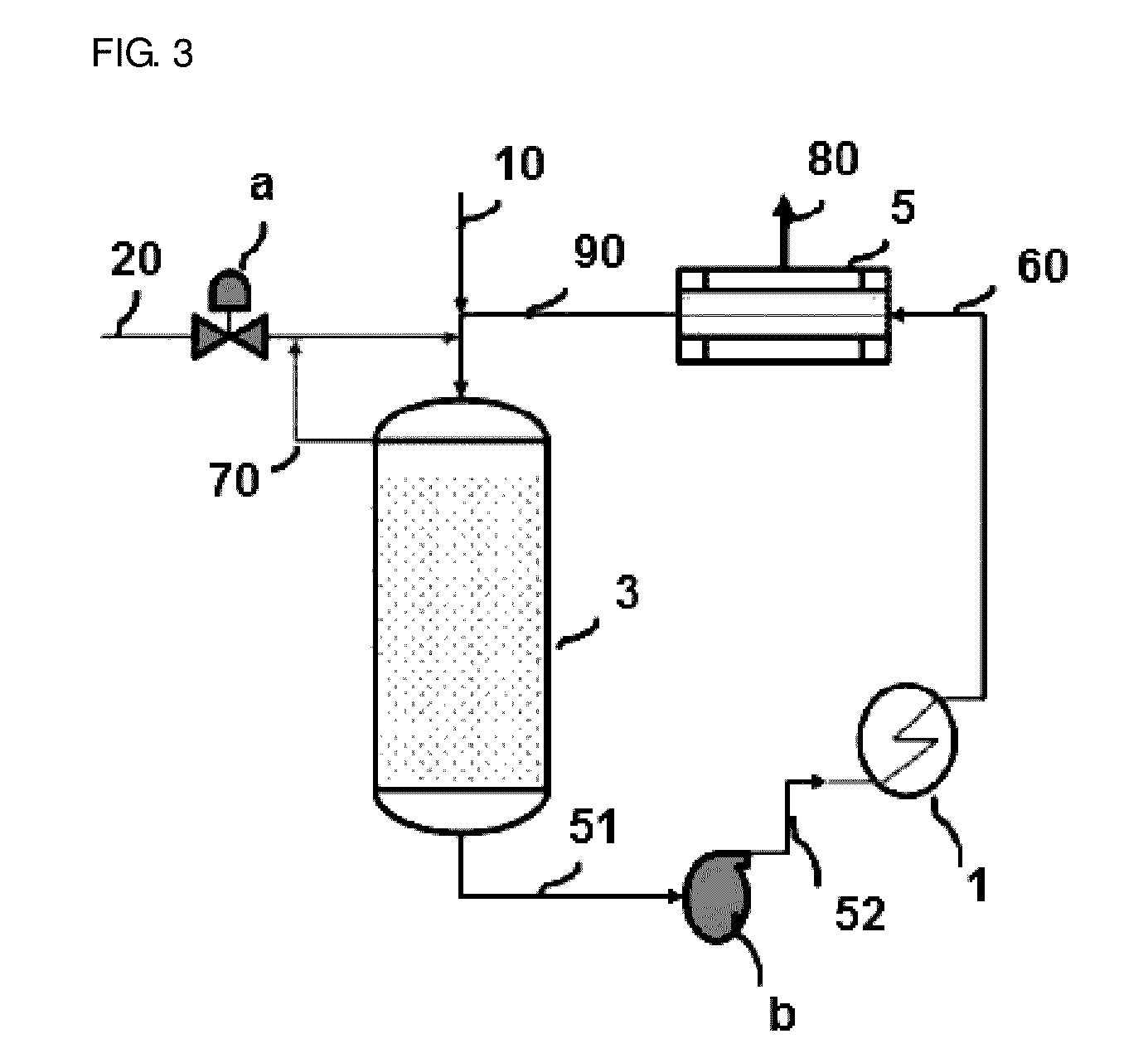Hydrogenation method of phthalate compound
a technology of phthalate compound and hydrogenation method, which is applied in the direction of physical/chemical process catalysts, metal/metal-oxide/metal-hydroxide catalysts, organic chemistry, etc., can solve the problems of deteriorating raw material yield and uneven hydrogenation reaction of compound, so as to improve reaction yield and increase diffusion of phthalate compound , the effect of wettability of the catalys
- Summary
- Abstract
- Description
- Claims
- Application Information
AI Technical Summary
Benefits of technology
Problems solved by technology
Method used
Image
Examples
example 2
[0105]A hydrogenation reaction was performed in the same manner as in Example 1 except that a viscosity of DOTP introduced in the reactor in Example 1 was 3.55 cP.
example 3
[0106]A hydrogenation reaction was performed in the same manner as in Example 1 except that a viscosity of DOTP introduced in the reactor in Example 1 was 2.82 cP.
experimental example 1
[0109]Evaluation of Catalytic performance
[0110]Catalytic performance in Examples 1 to 3 and Comparative Examples 1 and 2 was evaluated by the following method.
[0111]Initial Performance: After performing the hydrogenation reaction using a catalyst that was never used, a rate (%) of parts by weight of dioctyl terephthalate converted into di(2-ethylhexyl)cyclohexane-1,4-dicarboxylate (DEHCH) based on 100 parts by weight of the injected dioctyl terephthalate.
[0112]An initial reaction conversion rate and a conversion rate after continuously operating the reactor for 20 hours were calculated by performing each of the experiments using the same catalyst and the reactor having the same length.
TABLE 2DOTP ViscosityInitial ReactionConversion Rate(cP) InjectedConversion rate(%) after 20 hrinto Reactor(%) in Reactorof ReactionExample 14.6256.551.1Example 23.5568.463.5Example 32.8277.273.2Comparative32.65.31.5Example 1Comparative14.97.42.2Example 2
[0113]Referring to the results shown in Table 2,...
PUM
| Property | Measurement | Unit |
|---|---|---|
| viscosity | aaaaa | aaaaa |
| viscosity | aaaaa | aaaaa |
| temperature | aaaaa | aaaaa |
Abstract
Description
Claims
Application Information
 Login to View More
Login to View More - R&D
- Intellectual Property
- Life Sciences
- Materials
- Tech Scout
- Unparalleled Data Quality
- Higher Quality Content
- 60% Fewer Hallucinations
Browse by: Latest US Patents, China's latest patents, Technical Efficacy Thesaurus, Application Domain, Technology Topic, Popular Technical Reports.
© 2025 PatSnap. All rights reserved.Legal|Privacy policy|Modern Slavery Act Transparency Statement|Sitemap|About US| Contact US: help@patsnap.com



